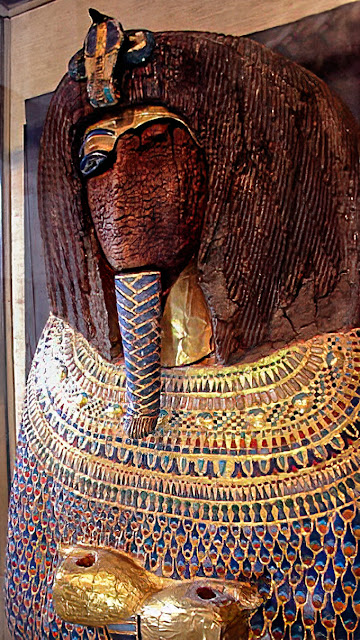Striking Power: Iconoclasm in Ancient Egypt through April 26, 2020 at the Cummer Museum of Art and Gardens in Jacksonville, Florida
Striking Power: Iconoclasm in Ancient Egypt through April 26, 2020 at the Cummer Museum of Art and Gardens in Jacksonville, Florida.
Striking Power explores the history of iconoclasm in relation to ancient Egyptian art through forty masterpieces on loan from the Brooklyn Museum of Art. Focusing on the legacies of kings Hatshepsut (reigned c. 1478–1458 BCE) and Akhenaten (reigned c. 1353–1336 BCE), as well as the destruction of objects in late Antiquity (3rd to 7th century CE), the exhibition pairs deliberately destroyed artworks with undamaged examples. Iconoclasm is a practice that spans history and continues to the present day, but Striking Power explains the ritual basis for image-destruction in ancient Egypt—namely that artworks served both as physical representations of an individual as well as containers of his/her powerful spiritual energy. Related activities include a series of lectures on iconoclasm throughout history between Feb. 4 and April 7. An “Egyptian Dinner Party” is scheduled for Feb. 21, and Egyptologist Dr. Bob Brier is scheduled to host a lecture on Feb. 26, 2020.
Image: Egyptologists today generally agree that this defaced sarcophagus belongs to either pharaoh Akhenaten or Smenkhkare based on the numerous Amarna era objects found in Tomb KV55 of the Valley of the Kings. However, considering the amount of damnatio memoriae inflicted against the sarcophagus, where all its royal cartouches were erased, it might well have belonged to Akhenaten himself whose memory was proscribed with the restoration of the cult of Amun after his reign. The sarcophagus was found in January 1907 in Tomb KV55 by Theodore Davis and Edward R. Ayrton. Image courtesy of Wikimedia Commons contributor Hans Ollermann.




Comments
Post a Comment